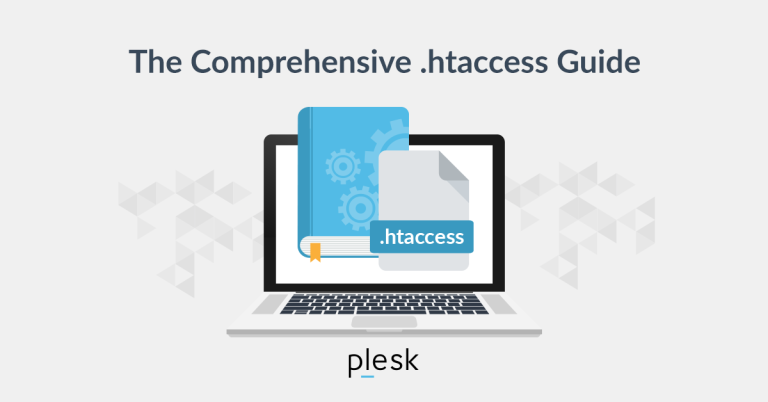The power of virtualization technology is available to every business. Virtualization is common for companies themselves and via the applications and services on which they count. But not all virtualization solutions are created equal, and what is an excellent solution for one business might be a bad fit for another.
Virtualization is using software to replicate what was previously only available via hardware. A dedicated server can run many applications or host many websites. If any of those applications or websites experience a surge in traffic or need extra storage, those needs come at the expense of the other applications.
Virtualization uses hypervisors to create separate virtual servers on existing physical hardware. It allows for dividing resources so that those needing more storage, like high-traffic sites or applications, will not impact other tenants. As a result, virtualization is a great way to protect the network, maximize return on investment, and get the most out of server resources without always having to buy more hardware.
Two of the most popular virtualization software providers are VMware and Hyper-V. Both hypervisors provide the tools required to virtualize and manage infrastructure. While their core virtualization products are very similar, vital add-ons like Hyper-V System Center and VMware ESXi are entirely different. This article uncovers the difference between VMware and Hyper-V so you understand which virtualization solution works best for your needs. We also explore why businesses need VMware hosting and related solutions.
What Is Hyper-V?
Hyper-V is the virtualization system offered by Microsoft. Originally called Windows Server Virtualization, Hyper-V was released in 2008 and served to create virtual machines (VMs) running Windows. Hyper-V is a bare-metal hypervisor because it operates directly on the hardware, below the operating system, or other virtualized components.
Hyper-V is fast and scalable because of its micro-kernelized architecture, which allows its services to run independently of the hardware layer. Because of this, Hyper-V is flexible and efficient, giving Windows users excellent performance and manageability.
Because Microsoft created Hyper-V, it is tailor-made to work with their products and services. Additionally, Hyper-V can migrate or port virtual servers without downtime, even across different environments.
That said, Hyper-V has its limitations and drawbacks. For example, Hyper-V did not support Linux in the early days, although it does now. As a result, you can set up and deploy Linux VMs on Hyper-V. However, Hyper-V does maintain some reliance on Microsoft itself for deeper features like the advanced management features found in System Center Virtual Machine Manager (SCVMM).
What Is VMware ESXi?
Launched in 1998, VMware was the first-to-market virtualization software. The VMware offering that is comparable to Hyper-V is called ESXi. Like Microsoft’s offering, VMware ESXi allows the virtualization of desktop machines (Linux and Windows) and servers, giving businesses of all sizes maximum flexibility for their IT infrastructure. In addition, VMware’s robust service offering also includes a suite of tools that help maximize the virtualization experience for large and small companies. Initially built for the mid-market, VMware also serves the enterprise and is one of the most popular virtualization application suites.
VMware is flexible and supports various operating systems and applications, even on the same machine. VMware is built to help reduce data center costs, improve the efficiency of existing hardware, and help older technologies find extended life through virtualization.
5 Key Reasons To Choose VMware ESXi Instead of Hyper-V
VMware works for most business use cases instead of Hyper-V. While Hyper-V offers users many benefits, certain limitations prove unfavorable compared to VMware. Here are five reasons to consider VMware instead of Hyper-V if your organization is considering either of these virtualization technologies.
1. Included Templates
Templates are a great way to perform everyday tasks and activities without starting from scratch. VMware templates help automate the process of creating VMs. It includes several built-in templates that you can use to create virtual machines. Once created in VMware, it is usable again as needed.
Templates include options for different operating systems, applications, and hardware configurations. These options make creating a virtual machine specifically tailored to your needs easy. Other templates must be created the first time but can be used repeatedly.
While VMware includes prebuilt templates, Hyper-V does not. Typically, you must create all your VMs from scratch, which can be time-consuming and difficult for novice users. However, there are manual ways to create automation within Hyper-V. SCVMM offers advanced template solutions that require an entire Windows deployment system to trigger the actions, unlike VMware’s ability to run custom scripts or deploy templates from files.
2. Superior Application Management Tools
Comparing application management in VMware and Hyper-V is difficult, as both virtualization platforms offer similar functionality. In addition, both provide centralized management for easy application administration, allowing you to manage all your applications from a single location, regardless of where they are running.
However, one advantage of VMware is that it offers a broader range of management tools, including vRealize Operations Manager and vCenter. Additional tools give VMware an edge as it relates to management versatility.

3. Built-In Resilience
VMware Fault Tolerance (FT) is a feature of VMware that creates a duplicate VM running on a separate host server. This built-in resilience is the biggest reason to choose VMware ESXi over Hyper-V as your virtualization technology. If the primary VM fails, the FT VM will take over and continue to run, ensuring that your business operations are not interrupted.
Through fault tolerance, systems with up to four cores can hot replicate or migrate VMs without downtime to a second node in the event of a hardware failure. Unfortunately, Hyper-V does not allow for this functionality, which can be critical for businesses that cannot afford even a moment of downtime.
4. More Supported Operating Systems
VMware and Hyper-V support Linux, Windows, and various other operating systems. One significant difference is that VMware ESXi supports macOS, which Hyper-V does not. For organizations that use macOS, this is a crucial factor in deciding on their virtualization software.
5. Hardware Efficiency and Superior Scalability
VMware is more efficient with memory usage due to its support for memory duplication. This feature allows more applications and services to run simultaneously without running out of memory.
While Hyper-V supports more memory in the host server, VMware supports a higher maximum memory allotment per VM. Additionally, VMware offers greater flexibility with CPU usage, allowing you to allocate resources most efficiently for your unique use case.
When thinking about scalability and provisioning, having as much compute power as possible is critical because modern applications require more processing horsepower than ever before to operate correctly. And while Hyper-V wins regarding how physical memory is addressed and accommodated during provisioning, VMware has an edge regarding how many CPUs per host are deployed.
Hyper-V is limited to 512 logical cores on a host, whereas ESXi is limited to 768 cores, a 50% increase. Scalability requires an environment that delivers the performance capabilities necessary to meet all your demands.
Prioritizing What’s Important for Your Business
As with most technology, there are some situations where a tool can be a great decision and others where the absence of features or functionality can be a deal-breaker. A decision made today will likely impact the business for years when it comes to virtualization in the enterprise. Both ESXi and Hyper-V have benefits and drawbacks. Ultimately, the decision will come down to the infrastructure you use to support your virtualized servers, the applications and operating system you use, and the processing capacity you require.
Hyper-V works great in many cases for many businesses. However, VMware also provides some advantages that make it a great choice. VMware’s advantages in provisioning, scalability, and superior file systems make a clear case for VMware ESXi.
Liquid Web works with small and medium businesses, managed service providers, and IT firms to deliver the right virtualization solutions for driving the business forward. Our deep expertise in the setup, deployment, and management of Private Cloud powered by VMware and Managed Microsoft Hyper-V makes Liquid Web a standout partner you can trust.
Contact us today to learn more about these applications and how either might help your business grow.





